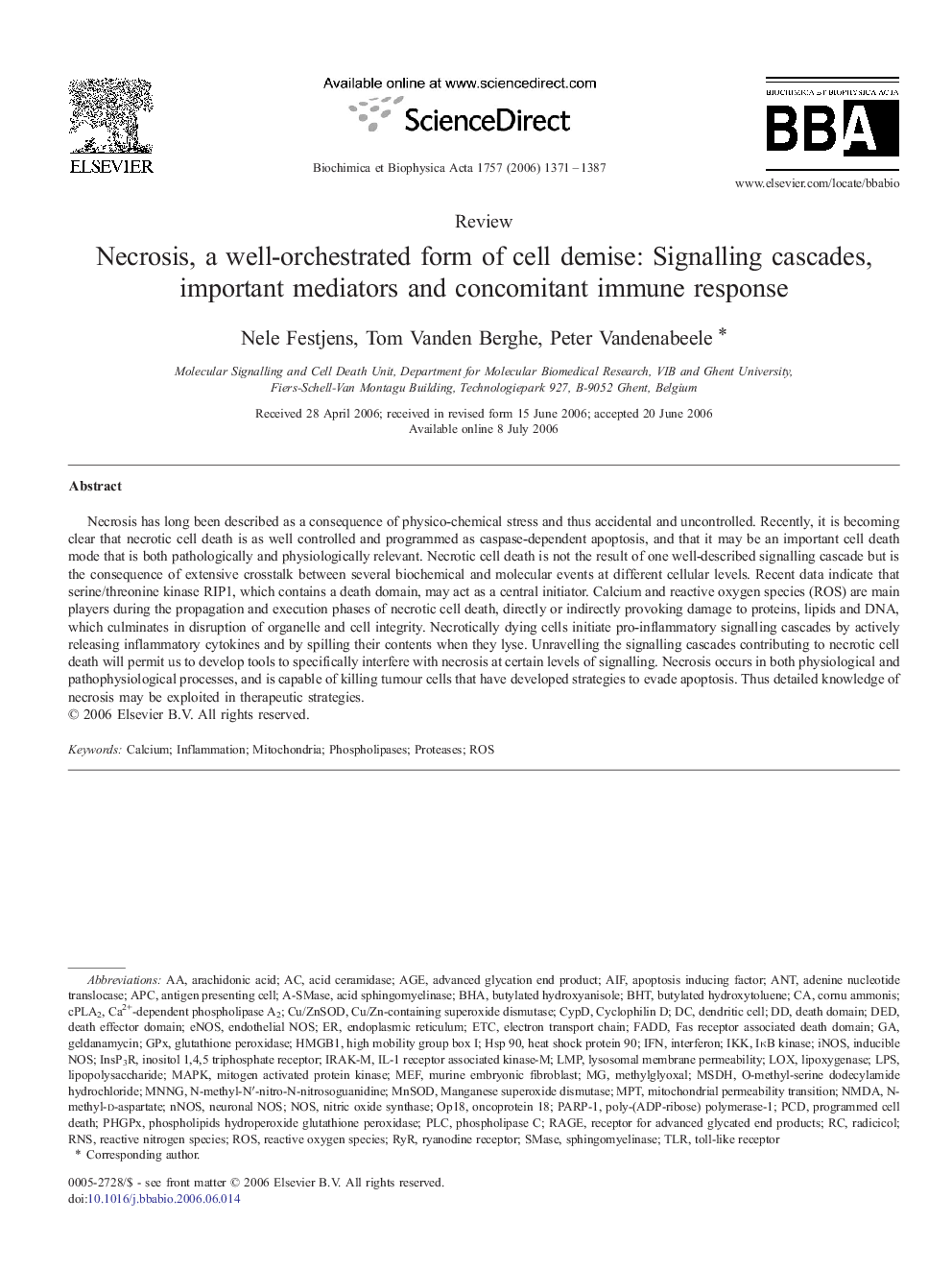| Article ID | Journal | Published Year | Pages | File Type |
|---|---|---|---|---|
| 1943842 | Biochimica et Biophysica Acta (BBA) - Bioenergetics | 2006 | 17 Pages |
Necrosis has long been described as a consequence of physico-chemical stress and thus accidental and uncontrolled. Recently, it is becoming clear that necrotic cell death is as well controlled and programmed as caspase-dependent apoptosis, and that it may be an important cell death mode that is both pathologically and physiologically relevant. Necrotic cell death is not the result of one well-described signalling cascade but is the consequence of extensive crosstalk between several biochemical and molecular events at different cellular levels. Recent data indicate that serine/threonine kinase RIP1, which contains a death domain, may act as a central initiator. Calcium and reactive oxygen species (ROS) are main players during the propagation and execution phases of necrotic cell death, directly or indirectly provoking damage to proteins, lipids and DNA, which culminates in disruption of organelle and cell integrity. Necrotically dying cells initiate pro-inflammatory signalling cascades by actively releasing inflammatory cytokines and by spilling their contents when they lyse. Unravelling the signalling cascades contributing to necrotic cell death will permit us to develop tools to specifically interfere with necrosis at certain levels of signalling. Necrosis occurs in both physiological and pathophysiological processes, and is capable of killing tumour cells that have developed strategies to evade apoptosis. Thus detailed knowledge of necrosis may be exploited in therapeutic strategies.
